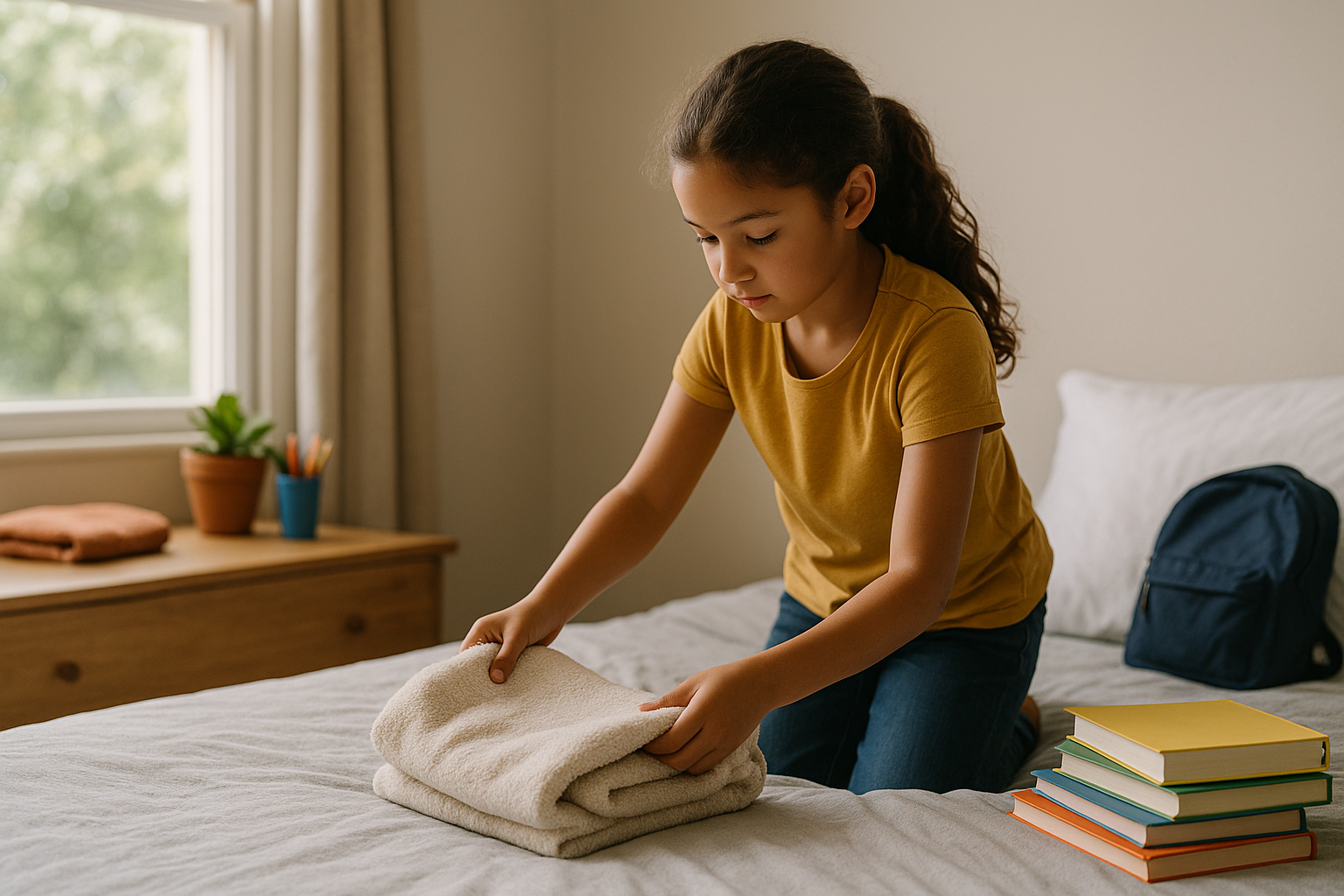Responsibility is one of the most valuable character traits you can instill in your child. It builds trust, independence, and confidence—and prepares them to handle challenges later in life. But responsibility doesn’t magically appear when your child turns a certain age. It’s developed little by little through consistent daily habits and positive guidance.
Here’s how to teach your child to be responsible—not by demanding perfection, but by helping them learn through action, routine, and trust.
What Responsibility Really Means
Responsibility goes beyond doing chores. It includes:
- Taking care of their belongings
- Following through on tasks
- Owning their actions and decisions
- Being accountable when they make mistakes
- Managing time, routines, and obligations
When kids learn responsibility, they feel capable—and others know they can be trusted.
Start With Age-Appropriate Tasks
Give your child tasks they can realistically handle based on their age and development. The key is to help them feel successful—not overwhelmed.
Examples:
Toddlers (2–3 years):
- Putting toys in a bin
- Wiping small spills
- Helping set the table with napkins
Preschoolers (4–5 years):
- Feeding pets
- Making their bed (imperfectly is okay!)
- Picking out clothes
School-age children (6–10 years):
- Packing their backpack
- Doing simple laundry tasks
- Helping with meal prep
Preteens and teens:
- Managing homework independently
- Earning and budgeting allowance
- Caring for siblings, pets, or shared spaces
Start small and build as they grow.
Build Responsibility Into Routines
Routines create structure—and structure supports responsibility. When tasks become part of a daily rhythm, they feel less like chores and more like normal life.
Try routines like:
- Morning: make bed, brush teeth, pack school bag
- Afternoon: snack, homework, free time
- Evening: help with dinner, screen time ends, tidy up before bed
Post visual charts or lists to help younger kids remember what’s expected.
Give Clear Instructions and Expectations
Children aren’t born knowing how to be responsible. Teach them step by step.
For example, instead of:
“Clean your room!”
Say:
“Please put your books on the shelf, clothes in the hamper, and toys in the basket.”
Clear expectations help your child know what success looks like—and build confidence in their ability to meet it.
Allow Natural Consequences
If your child forgets their lunch or loses their favorite toy, avoid rushing to fix it every time. Natural consequences are powerful teachers.
Say:
“I know you were upset not having your lunch. Let’s talk about how to remember it tomorrow.”
Letting them experience the results of their actions (safely and kindly) helps them learn to be more responsible next time.
Use Encouragement, Not Bribery
Instead of offering rewards or bribes every time your child follows through, focus on encouragement and the internal satisfaction of being responsible.
Try:
- “I noticed how you remembered to feed the dog without being asked—great job!”
- “That was really mature of you to clean up after dinner. I appreciate it.”
- “You handled that all by yourself. How does it feel to be trusted?”
This builds intrinsic motivation—doing the right thing because it feels good, not because there’s a reward.
Be Patient With Mistakes
Learning responsibility is a process, and your child will forget, resist, or mess up along the way. That’s normal.
Instead of scolding:
- Offer reminders without judgment
- Break big tasks into smaller steps
- Encourage retrying instead of doing it for them
- Ask: “What do you think would help you remember next time?”
Your patience teaches that it’s okay to fail—as long as you try again.
Give Them Ownership and Choice
Letting your child make decisions—within boundaries—gives them a sense of control and accountability.
For example:
- “Would you rather do your homework before or after snack?”
- “Do you want to be in charge of feeding the cat or setting the table?”
- “How do you want to organize your school bag?”
Ownership builds pride, which leads to more consistent follow-through.
Connect Responsibility to Privilege
Help your child understand that responsibility and freedom go hand in hand.
Explain:
- “When you show you can take care of your things, you’ll get to choose more for yourself.”
- “Part of growing up is earning trust by being responsible.”
- “We all help around the house because we’re a team—and that’s what families do.”
Responsibility isn’t a punishment—it’s a path to independence.
Be a Role Model of Responsibility
Your child learns from watching how you handle your own commitments.
Model responsibility by:
- Following through on promises
- Admitting mistakes and fixing them
- Keeping routines and showing up on time
- Taking care of your belongings and space
When they see you handle life with care and integrity, they’re more likely to do the same.
Responsibility Is Built One Small Habit at a Time
You don’t need a reward chart or strict discipline to teach your child responsibility. You just need consistency, connection, and the willingness to guide them patiently.
When you show trust, celebrate effort, and allow room for growth, your child will rise to meet expectations—and take pride in becoming capable, dependable, and responsible in their own way.
